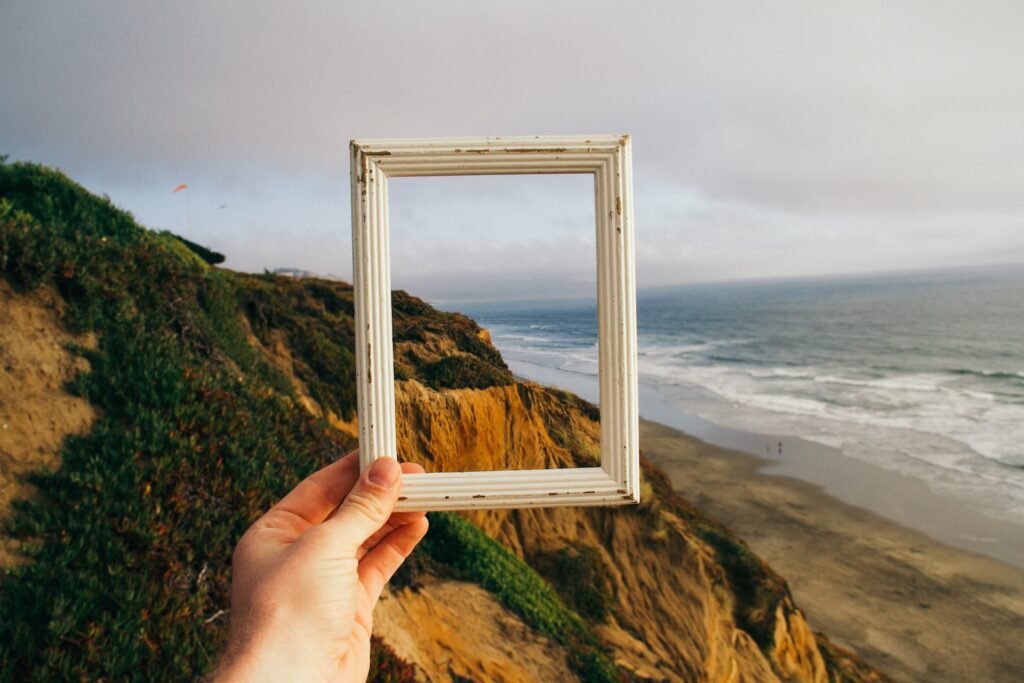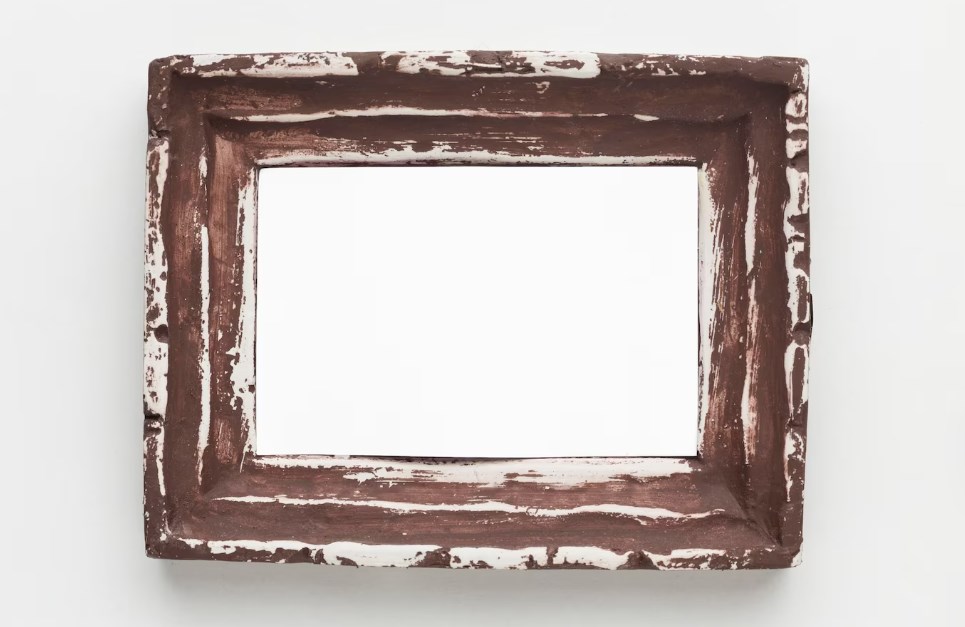Do you have an old painting frame that’s seen better days? Restoring vintage frames is not just about beautifying an antique; it’s about preserving a piece of history and artistry.
This comprehensive guide will walk you through the complete process—from assessing the frame’s condition to the hands-on restoration techniques. Dive in to uncover the fascinating stories your vintage frame holds and learn how to make it shine again.
Giving Your Vintage Frame a Makeover
Do you have a beautiful vintage frame that needs some love and attention? Giving your vintage frame a makeover can be a rewarding and enjoyable project. Not only will it breathe new life into your frame, but it will also help to preserve its history and value.
In this section, we will guide you through the process of restoring and transforming your vintage frame, from understanding its value to selecting the right tools and materials, and finally, carrying out the restoration itself. So, let’s dive in and uncover the secrets of giving your vintage frame a stunning makeover.
Understanding the Value of Vintage Frames
Before embarking on any restoration project, it’s important to understand the value of your vintage frame. Vintage frames have a rich history that can make them highly sought after by collectors and art enthusiasts.
By restoring and preserving your vintage frame, you are not only maintaining its aesthetic appeal but also ensuring its longevity and increasing its value. Let’s explore the fascinating history behind vintage frames and why their preservation is essential.
The History of Vintage Frames
Vintage frames have a story to tell. They were not only designed to enhance and protect paintings or photographs but they were also considered works of art in their own right. From ornate gilded frames of the Baroque period to simple yet elegant Art Deco frames, each era had its distinctive style.
These frames were often crafted by skilled artisans who dedicated their time and expertise to create pieces that would complement and elevate the artwork they held:
- The Baroque period, which spanned from the late 16th century to the early 18th century, was characterized by opulence and grandeur. Baroque frames were often adorned with intricate carvings, gilded with gold leaf, and embellished with motifs inspired by nature, mythology, and religious symbolism. These frames were meant to convey a sense of wealth and power, reflecting the lavish tastes of the time;
- As the world transitioned into the 19th century, the Neoclassical style emerged, drawing inspiration from ancient Greek and Roman art. Neoclassical frames were characterized by their clean lines, simplicity, and symmetry. They aimed to evoke a sense of order, balance, and rationality, reflecting the ideals of the Enlightenment period;
- With the arrival of the Art Nouveau movement in the late 19th century, frames took on a more organic and decorative form. Art Nouveau frames featured flowing lines, intricate floral motifs, and a sense of fluidity. These frames were a departure from the rigid structures of the past and embraced the beauty of nature, often incorporating elements such as leaves, flowers, and vines;
- By the 20th century, the Art Deco movement emerged, characterized by its sleek and geometric designs. Art Deco frames were often made of materials such as chrome, glass, and Bakelite, reflecting the influence of industrialization and modernity. These frames exuded a sense of glamour and sophistication, with their bold shapes and luxurious finishes.
By understanding the historical context and design influences, you can appreciate the craftsmanship that went into creating these masterpieces. Vintage frames not only serve as a window into the past but also as a testament to the skill and creativity of the artisans who crafted them.
Why Preserve Vintage Frames?
Preserving vintage frames is crucial to ensure their longevity and maintain their historical and artistic significance. By taking care of your vintage frame, you are continuing the legacy of the past and allowing future generations to appreciate its beauty.
Additionally, restoring a vintage frame can help to protect and stabilize the artwork it houses, preventing further damage and deterioration.
- Over time, vintage frames can be subjected to various environmental factors such as sunlight, humidity, and temperature fluctuations. These factors can cause the frame materials to deteriorate, leading to discoloration, warping, or even structural damage. By properly restoring and preserving vintage frames, you can mitigate these risks and ensure their continued beauty and functionality;
- Preservation also plays a crucial role in maintaining the historical and artistic significance of vintage frames. These frames are not just decorative accessories but important artifacts that reflect the artistic movements and cultural trends of their time. By preserving vintage frames, we preserve a part of our collective heritage and contribute to the understanding and appreciation of art history;
- Furthermore, restoring a vintage frame can have a positive impact on the artwork it holds. A well-preserved frame provides a stable and protective environment for the artwork, shielding it from dust, moisture, and other potential hazards. This preservation effort not only enhances the visual presentation of the artwork but also ensures its longevity, allowing future generations to enjoy and study these valuable pieces of art.
Vintage frames hold immense value, both in terms of their historical significance and aesthetic appeal. By understanding their rich history and taking the necessary steps to preserve and restore them, we can ensure that these frames continue to captivate and inspire generations to come.

Assessing the Condition of Your Vintage Frame
Before diving into the restoration process, it’s important to assess the condition of your vintage frame. This evaluation will help you determine the extent of the damage and identify the necessary steps for restoration.
Let’s explore the key aspects to consider when assessing your vintage frame’s condition:
- Identifying Signs of Wear and Tear: Inspect your vintage frame for any signs of wear and tear. Look out for scratches, dents, or chips on the surface. Examine the corners and edges carefully for any structural damage. Additionally, check for any discoloration or fading of the finish. These observations will help you understand the specific areas that need attention during the restoration process;
- Determining the Extent of Damage: Once you have identified the signs of wear and tear, it’s important to determine the extent of the damage. Is the damage confined to specific areas, or does it affect the overall structure? Assess whether the damage is minor or requires more intensive restoration techniques. This evaluation will guide you in deciding the appropriate course of action to restore your vintage frame effectively;
- Gathering the Necessary Materials for Restoration: Now that you have assessed the condition of your vintage frame, it’s time to gather the necessary materials for the restoration process. The right tools and materials are essential for achieving a successful and professional-looking makeover. Let’s explore the key items you’ll need to restore your vintage frame to its former glory;
- Choosing the Right Tools: Having the right tools is essential for a smooth and efficient restoration process. Some essential tools you may need include sandpaper, clamps, a mallet, chisels, and a rubber mallet. These tools will help you remove damaged areas, repair joints, and ensure a seamless restoration of your vintage frame;
- Selecting Quality Restoration Materials: Choosing the right restoration materials is vital for achieving the desired results. Opt for high-quality wood filler for repairing cracks and gaps. Select a suitable primer and paint that will match the original finish of your vintage frame. Consider using archival-quality materials that are specially formulated to protect against UV rays and prevent future damage;
- Preparing Your Vintage Frame for Makeover: Before diving into the restoration process, it’s important to prepare your vintage frame adequately. Proper preparation will ensure a clean canvas for your makeover and set the stage for a successful restoration. Let’s explore the essential steps to prepare your vintage frame for its transformation;
- Cleaning Your Vintage Frame: Start by cleaning your vintage frame to remove any dirt, dust, or grime that may have accumulated over the years. Use a soft cloth or brush to gently wipe the surface. For stubborn stains, you can use a mild detergent diluted with water. However, be cautious not to damage the delicate finish of your vintage frame;
- Repairing Minor Damages: If your vintage frame has minor damages, such as small scratches or chips, it’s essential to repair them before proceeding with the restoration process. Use a suitable wood filler to fill in any cracks or gaps. Sand the repaired areas gently to achieve a smooth surface that seamlessly blends with the rest of the frame.
Restoring Your Vintage Frame
Now that your vintage frame is prepared and ready for restoration, it’s time to bring it back to its former glory. Restoring a vintage frame requires careful craftsmanship and attention to detail. Let’s explore the techniques and steps involved in the restoration process.
Techniques for Repairing Major Damages
If your vintage frame has significant structural damage, such as broken or loose joints, it’s essential to address these issues before proceeding with the restoration. Use clamps or woodworking glue to secure loose joints and allow them to dry completely.
For broken parts, consider using suitable wood fillers or carefully replicating missing elements to restore the frame’s original shape and stability.
Replacing Missing or Broken Parts
If your vintage frame has missing or broken parts that cannot be repaired, it may be necessary to replace them. Use reference materials or consult with experts to ensure accurate replication of the original elements. Pay attention to the design details and try to source materials that closely match the original ones.
Once the replacements are installed, take care to finish and blend them seamlessly with the rest of the frame.
Conclusion
With the restoration process complete, you can now stand back and admire the transformation of your vintage frame. Not only have you breathed new life into a treasured piece, but you have also contributed to the preservation of its history and value. Remember to give your restored vintage frame the care and attention it deserves to ensure its longevity and continued enjoyment for years to come.
So go ahead and give your vintage frame the makeover it deserves and let it become a statement piece that adds charm and character to your space.
